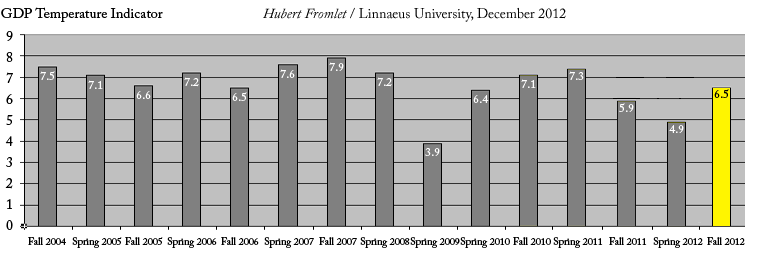The International Business Compass of the HWWI / Hamburg
January 9, 2013
The objective of this blog is to focus on both short-term and long-term perspectives for emerging markets. An interesting publication in this context is the BDO International Business Compass (IBC), edited by the HWWI-institute in Hamburg (Hamburgisches WeltWirtschaftsInstitut).
The IBC is a composition of publicly available indicators – one a scale from 0 to 100, 100=best value – for 174 countries that reflect economic, political and social dimensions. These 174 countries are divided into two groups, OECD countries and non-OECD countries. Summarized indicator results are given for the total index and its three subgroups with the economic, political and social dimensions – for all 174 countries. For the non-OECD countries (emerging economies), there is also an average benchmark for each continent.
The IBC ranking instrument serves – in line with its name – as an International Business Compass. Of course, I recommend comparing the results of the IBC with similar publications like the World Bank’s “Doing Business”. The more sophisticated ranking tables – with both microeconomic, macroeconomic, political and social dimensions – decision-makers in both SMEs and bigger companies have access to, the better the conditions for making well-analyzed corporate decisions, particularly concerning those with strategic dimensions.
Let’s exemplify the latest results from 2012 by looking at some Asian countries. This does not, of course, rule out that individual companies so far may have a different experience and preference for ranking.
BDI, South East and East Asia, in a sales perspective * (Japan excl.)
| 1 | China | (7) |
| 2 | Taiwan | (3) |
| 3 | Hongkong | (2) |
| 4 | India | (4) |
| 5 | Singapore | (1) |
| 6 | Malaysia | (6) |
| 7 | Indonesia | (8) |
| 8 | Thailand | (5) |
——————————
* In brackets from a production perspective. Source: BDO International Business Compass, by HWWI, Hamburg (editor Michael Bräuninger).
Let me add that the HWWI internationally also is known for its monthly commodity index. During 2012, the composed commodity index of the HWWI fell by around 1 percent. However, different subindices partly had quite volatile developments during the past year. Certain food prices rose strongly in 2012, other food commodities like coffee and sugar had declined markedly. Oil prices did not move very much in 2012 in a price average perspective – but substantially during the course of the last year. Industrial metals had quite a weak development until late summer. But expectations of Chinese fiscal injections – supporting particularly infrastructure – led to a recovery of several metal prices (aluminum, copper) since August/September.
Again, we can recognize what China increasingly means to many commodity prices.
Hubert Fromlet
Professor of International Economics
Editorial board



